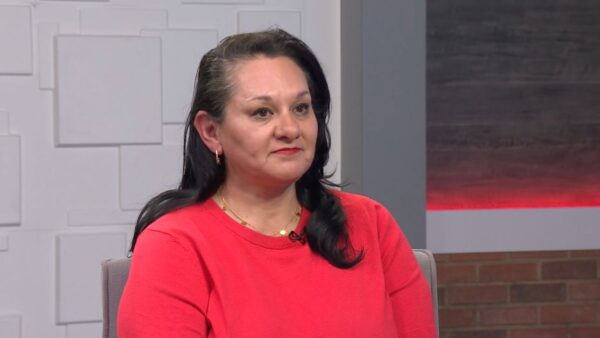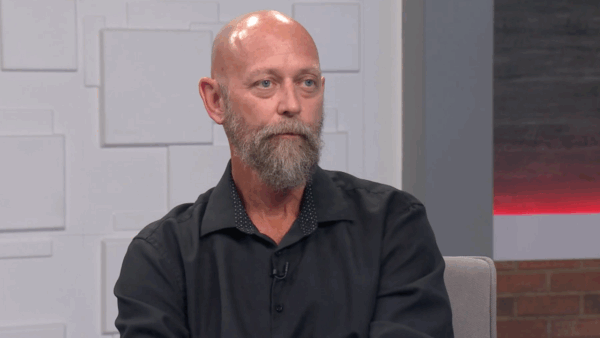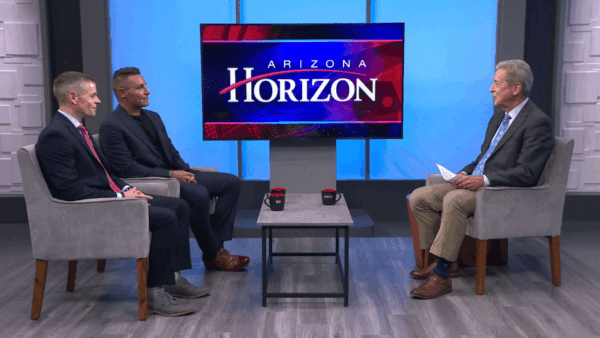Phoenix Mayor Phil Gordon talks about a huge grant from the U.S. Department of Energy that will be used to launch an “Energize Phoenix” project that will save energy, create thousands of “green jobs” and transform aging homes and neighborhoods into models of energy efficiency.
Ted Simons: Vice-president Joe Biden announced yesterday the city of Phoenix will rave $25 million federal grant to improve energy efficiency along parts of the light rail. The 30 use the money to launch a program in partnership with ASU and APS. Joining me now to talk about this is Phoenix mayor Phil Gordon. Good to see you. Thanks for joining us.
Phil Gordon: Thank you.
Ted Simons: It's called energize Phoenix. What are we talking about here?
Phil Gordon: We're talking about first a $25 million grant we competed against hundreds of cities throughout the United States, in fact there was $2.5 billion worth of applications for $400 million of grants. And Phoenix received the largest grant, $25 million in a unique grant in the sense that these grants were to retrofit homes and change energy consumption and the way we act, but what we did is rather than defining a neighborhood as a traditional neighborhood, we said we are really going to make a difference. We're going to define it along the light rail line, about a half mile on each side of the 10-miles from camelback and central to the airport, and it applies to private businesses, private homes, nonprofits, and government buildings to not only change our habits, but also to help write down the cost of retrofitting those buildings to reduce energy consumption and homes by 18% before existing businesses by about 30%, and reduce over 50,000 metric tons of carbon going up into the air.
Ted Simons: Why that particular stretch, and why light rail? Why not find a community out there and retrofit there?
Phil Gordon: One, we wanted to make it large enough to really and visible enough to show people. And two, that 10-mile stretch has every conceivable economic, social, and type of building multifamily, single-family, condominium, businesses, nonprofits, government buildings, and University buildings that can all go within this core, and we also have an agreement with our partners from APS, national bank, ASU, Maricopa community college to leverage that money into about $180 million, and therefore those incentives to get everybody to do that and then to use smart meters we can see that reduction will lead to we believe further use by the city and expand throughout the.
Ted Simons: so let's say I'm a homeowner along this stretch. I would imagine that times are tough for that particular homeowner, what kind of money do I have to shell out, what kind of money do I receive, what do I get?
Phil Gordon: Well, what we're talking about is really the most efficient way to reduce energy consumption, which is not to use existing energy consumption, and reduce it, as opposed to adding solar and renewable, which gets expensive, which is great. But like you said, costs. So we're talking about first of all new doors, weatherization, insulation, fixing the holes in the ducts, plugging holes in the walls, and energy audit, and then monitoring in real time where the family can see it, or a business, the amount of usage compared to yesterday, so you can compare it. So we're talking about grants anywhere in the hundreds of dollars range, up to probably I think at this point we're estimating $10,000 or even more with our leveraging. So that people can write it down to an amount that they can afford, and it will be based on income, anybody's income, so it's not going to be limited to just certain social economic levels. It's also for private businesses. What we want to do is retrofit at least 30% of the homes and businesses along that core. And reduce that consumption. The second thing we're doing with this $25 million in the leverage is creating jobs. Jobs that can't be exported. These are green jobs, these are jobs that will be insulation, taking out equipment, putting equipment in. And they're going to be trained through the community college system on the green campus downtown. So that will be part of this plan. And then promoting and educating our community that it's simple. It's changing lights to CFLs, it's against caulking windows, you can make a big difference. Even two degrees difference in your thermostat over the month will make over a 5% difference in your utility bill.
Ted Simons: Will this be the kind of thing that folks riding light rail from 4th street up to central, will they see a difference, will it be something tangible?
Phil Gordon: Exactly. That's why the energy secretary said this is the most -- not only ambitious project that was submitted, but also the one with the most partners. Light rail is a partner, so you'll see a lot of the education, promotional along the light rail line, you'll be able to get off at a restaurant that will have qualified and will have used it and they will be promoting that. Or a home. Or, again, a government building. It's also something where the media and the University is right here, so the school's sauce Taina built will do a baseline of the amount of consumption within that core today, and then report to us to you, to the media, and to the federal government the reductions annually to show that it is working.
Ted Simons: Talk about the impact of ASU and the college of sustainability, along with APS, and the dynamic there.
Phil Gordon: Well, as the energy secretary and the vice-president said, in fact, the vice-president's words were, in talking about partnerships, this partnership that Phoenix put together with ASU, six private banks, the school of sustainability, the Maricopa County community college gateway, Rio Salado, as well as APS and other private partners that have helped and the city of Phoenix, it will make a substantial difference, number one, and number two, nobody has put the entire education, promotion, measuring and changing the way we do use of energy together like Phoenix has done.
Ted Simons: The idea, and I can hear people now saying this, sounds like the city is going to have to spend something for something here. This is a $25 million grant. Is the city going to have to spend for things and if so, can the city afford it?
Phil Gordon: The answer is no, we're not going to have to spend. In fact, we're going to be able to receive and use that money also to reduce our energy consumption, which will save taxpayers dollars. This is taxpayer money that was put forth by the Congress and the president under the recovery act that were grants, taxpayer dollars, including ours, that were going out to cities and only 25 cities qualified for it. That we will now get back in our community, create jobs that will create other revenue, and be used to help reduce the cost of this retrofitting within our community. So it's -- I don't want to see free money, because we all have paid for it, but this is money that is a triple win for the environment, for jobs, and for saving our residents money.
Ted Simons: And real quickly, plans to use another parts of sneaks.
Phil Gordon: Absolutely. As the first three years of the monitoring part of our business plan, we'll then start to take out this information to the rest of the community, take other incentives that we believe we will qualify for from the federal government, and put into other parts of the community. Most importantly, it's also things that we're going to be showing that for the cost that it does run retail, your payback is much, much quicker than, say, the large capital investments. Again, just a smart meter dashboard turning down your thermostat two degrees, we all will think of it as, I got to reduce it. But we alternate that thermostat. When you can see it in real time and you see that meter ticking and you can compare to it yesterday, then you will change your habits and you won't notice a difference. But you'll also reduce your bill significantly.
Ted Simons: All right. Mayor, good to see you.
Phil Gordon: Thank you.
Phil Gordon:Mayor of Phoenix;























